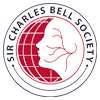The temporalis muscle is a strong chewing muscle located on the side of the head and is an important technique used as “Temporalis Muscle Flap” in reconstructive surgery. Thanks to this technique, tissue loss in the head, face and jaw area can be repaired. Thus, the patient can return to his/her daily vital activities in a short time. We have created the temporalis muscle flap content for you to have detailed information about this perfect procedure. By reviewing our content, you can have detailed information about the subject.
What is a Temporalis Muscle?
The temporalis muscle is a strong muscle structure located on both sides of the head in the temporal region and plays an important role in chewing function. This muscle, also known as the temporal muscle, is located in the temporal fossa on the side of the skull and connects to the lower jaw (mandible) and controls jaw movements. Its main function is to close, squeeze and retract the jaw (retraction) and it is especially active during chewing of hard foods. This muscle is innervated by the deep temporal nerves of the trigeminal nerve (V3 - mandibular branch) and its blood supply is provided by the temporal branches of the maxillary artery.
Temporalis muscle is not only limited to chewing function but also important in aesthetic and reconstructive surgery. In particular, functional and aesthetic improvements can be achieved by using it in eyelid reconstruction surgery or in the removal of tissue loss after facial paralysis. In addition, temporalis muscle spasm or overuse can lead to disorders such as headache, jaw pain (TMJ dysfunction) and teeth grinding (bruxism). In this context, the temporalis muscle plays an important role in chewing, speaking and facial expressions, even if it is not recognised in daily life, and when its health is maintained, jaw movements are comfortable and balanced.
How is Temporalis Muscle Flap Procedure Done?
Depending on the patient's condition, the temporalis muscle flap technique can be applied in more than one way. For this reason, your doctor will decide on the appropriate technique after examination and preliminary consultation. In this context, general anaesthesia is first applied to the patient before the operation. Then, in the temporalis flap surgery method, the muscles are separated from their roots in the skull. The muscles separated from here are advanced towards the edge of the mouth. After the advancement process, the muscles are fixed in the new position. If the advancement is done successfully, the temporalis muscle lifts the lower jaw after contraction at the end of healing. In this way, the smile revitalisation technique is also successful.
Benefits of Temporalis Muscle Flap Technique for Facial Paralysis
Facial paralysis or atrophy of the muscles can directly affect the smile muscles. In such cases, it is important to perform smile reconstruction with surgical intervention. It is also much better for the patient to choose the shortest and easiest ways. Apart from these, the advantages of temporalis muscle flap are as follows;
- It takes a shorter time to gain movement around the mouth and lips. After about 3 weeks, the muscles are mobilised and the smile comes alive.
- Since there is no need to find a donor from the body, the problem is solved by flap advancement. Compared to other types of surgery, temporalis flap surgery takes a shorter time.
- Microsurgical techniques are not required. In this way, the price of temporalis muscle flap treatment is lower.
Things to Consider Before and After Temporalis Muscle Flap
In order to avoid complications in surgical interventions, it is necessary to follow what the doctor says in order for the surgery to be successful. In this context, these should be given importance in order to minimise the risk of bleeding, to ensure the successful outcome of the surgery and to prevent scarring.
Things to Consider Before Temporalis Muscle Flap
The things you should pay attention to before temporalis flap surgery to be applied to the patient prevent you from experiencing discomfort after surgery. For this, the things to be considered before temporalis muscle flap are as follows;
- Blood thinners should not be used before the operation.
- The use of herbal teas and dietary supplements should be postponed for a while.
- Smoking and alcohol use should be stopped 2 weeks in advance.
- The patient must agree to undergo rehabilitation after surgery. This is essential to increase the mobility of the muscles and to ensure full recovery.
Things to Consider After Temporalis Muscle Flap Technique
In order to reduce the risk of bleeding after surgery and to prevent the formation of bruising and swelling, some points should be considered. To take a look at these points;
- It is important to apply cold compresses for the first 48 hours after surgery.
- It is recommended not to take a bath for about 72 hours. If you take a shower after this time, you should wash with warm water.
- The pressure around the mouth and head should not be increased by standing upside down.
- Care should be taken to sleep with the head held up for a while.
- There should be no pressure on the area of the drains.
- Medicines prescribed by the doctor must be used.
- You should pay attention to your diet and not consume hard foods.
- Since crusted and hard foods will strain your stitches, you can eat more soups and liquid foods.
- Protein-rich foods should be consumed.
- It is recommended not to wear make-up for the first 2 weeks to prevent irritation of the area.
- Smoking and alcohol consumption should be postponed for 1 month.
- The interval between antibiotic use should be observed to avoid the risk of infection.
- It is recommended to avoid strenuous and heavy exercise for about 2 months.
- You can do light exercises about 3 weeks after surgery.
- Within 1 week you can return to your daily life.
Who Are Candidates for Temporalis Muscle Flap Technique ?
The temporalis muscle flap technique to be applied to the person is shaped according to the extent of the damage. As more than one technique can be used together, it is possible to advance the muscles with temporalis muscle flap. You may wonder who is a candidate for temporal muscle flap technique.
- Patients with long-standing facial paralysis
- Those with atrophied facial muscles
- Those who need smile reconstruction
- Those who have lost their biting and chewing functions
- Those in need of smile revitalization
Since the degree of these problems is different in patients, temporalis muscle flap technique will vary. Since the most appropriate method will be selected after the examination, you can contact us to increase the success of the surgery.
What Are The Similarities and Differences Between a Functional Free Muscle Flap And a Local Muscle Flap?
Functional free muscle flap is used to revitalize the smile and give efficiency to the muscles. Since the procedure is performed over a large area, it starts from the scalp and continues with the release of the temporalis muscle. Local muscle flap is used to close an open wound or to correct a skin problem. Flaps immediately close to the skin are preferred.
- Loss of function can be restored with functional free muscle flap. However, the local muscle flap technique does not have a function such as recovery of function losses. Since it is more superficial, it can be used for aesthetic purposes in reconstruction applications.
- Functional free muscle flap, which provides a large area of effect, is applied under general anesthesia. Since local muscle flap is preferred in a small area, local anesthesia may sometimes be sufficient.
- In the functional free muscle flap procedure, all connections involving skin, bone and muscles are transported to another location by vessels and nerves. After being transported, they are attached to the connections in that place.
- In cases where local flaps are insufficient, functional free muscle flap is preferred.
- They are used in reconstruction surgical procedures.
- There is a problem of suture scarring after surgery.
- Pain and discomfort are felt at the incision sites.
- It also gives aesthetically effective results.
Temporalis Muscle Flap For Facial Paralysis Cost
Compared to the methods used in facial paralysis, there is no need to find a donor. The procedure is performed by releasing the temporalis muscle. Therefore, temporalis muscle flap cost is lower. For this reason, the cost is a bit lower as there is no need to remove tissue or muscle from any part of the body. However, considering the difficulty of the surgery and the loss of function, the amount to be paid should not be underestimated.
The doctor's surgical success, the difficulty of the case, the degree of damage to the muscles, and whether the patient has chronic conditions also affect the cost. If you want to restore the loss of function with smile revitalization, the price of temporalis muscle flap is insignificant. When you work with the best surgeons in the field, you will not need revision surgery and you will be satisfied with the result.
FAQ
Will I experience pain or discomfort after the surgery? If so, how long will it last?
Since the surgery extends from the inner part of the hair to the front of the ear and cheeks, the wide area of effect may cause you to feel discomfort after surgery. This discomfort and pain will disappear as healing takes place. You will not feel any discomfort or pain after about 2-3 days.
Does taking tissue from the temporalis muscle affect the appearance or function of my face?
No tissue is removed directly from the temporal muscle. On the contrary, the muscles are released and allowed to extend towards the cheeks. The temporalis muscle does not affect the general shape of the face and your other muscles. It also does not cause loss of function. Facial symmetry is not distorted and smile revitalization is also provided.
Where Will The Scars be After a Temporal Muscle Transfer?
The main incision used for the surgery is made in front of the ear and extends upwards behind the hairline. From here it passes to the other side of the ear. In older patients, in addition to this incision, an incision is made in the nasolabial fold between the lips and cheek. The incision scar here is also very well hidden. This incision is not made in operations performed on children.
How Long is Recovery And What Should I Expect After Temporal Muscle Transfer Surgery?
After temporalis flap surgery, patients are observed in the hospital for 1 night. If the procedure is smaller, you may be discharged on the same day. It is natural to have swelling and edema after the surgery. However, these swellings resolve within a few weeks to 1 month. The sutures are removed after 1 week and the surgical materials in the hair are removed after 2 weeks. After the first week, drainage is used to prevent bleeding on the scalp. In addition to this;
- In the first 2 weeks, the child should be fed mainly liquids to avoid active use of the masticatory muscles.
- A nutritional diet should be followed for a while and healthy foods should be consumed.
- After the 3rd to 4th week, the patient should smile by clenching their teeth. After about 1.5 months, they should start smiling without clenching their teeth.
- It is recommended to undergo physical therapy and rehabilitation for some time after the surgery.
What Should I Know About Scarring and Recovery After Temporal Muscle Transfer Surgery?
Since the incision is made in front of the ear and inside the head, you do not have to worry about the scar being visible. For this reason, the incision scars, which are very well hidden, begin to fade after a while. With the creams prescribed by the doctor, these scars almost disappear. The skin type, skin elasticity and general health of the person are effective in scarring.
After the wound scabs over, it heals and becomes pale. It may take up to 1 year for the scars to heal completely. However, this may take a little longer for deep cuts.
Is this temporalis muscle flap operation a permanent procedure or does it go away on its own after a while?
Most of these surgical interventions are permanent. Permanence is essential as long as the patient does not experience impairment in the laughing function due to trauma or other reasons after the surgery and facial paralysis does not recur. If there is no atrophy or trauma in the nearby nerves or muscles, temporalis flap surgery will be permanent.
Due to facial paralysis, I cannot move my face, speak or eat. At this point, does the temporalis muscle flap technique only provide aesthetic improvement? Or does it provide functional improvement as well?
The surgical technique used can also restore the patient's lost functions. Although the procedure is applied with aesthetic concerns, it allows you to be comfortable while using biting and chewing functions. Since the muscles are moved, the application is performed to provide mobility instead of the muscles that have lost their function. Although it provides aesthetic symmetry and good appearance, it also provides functional improvement.













